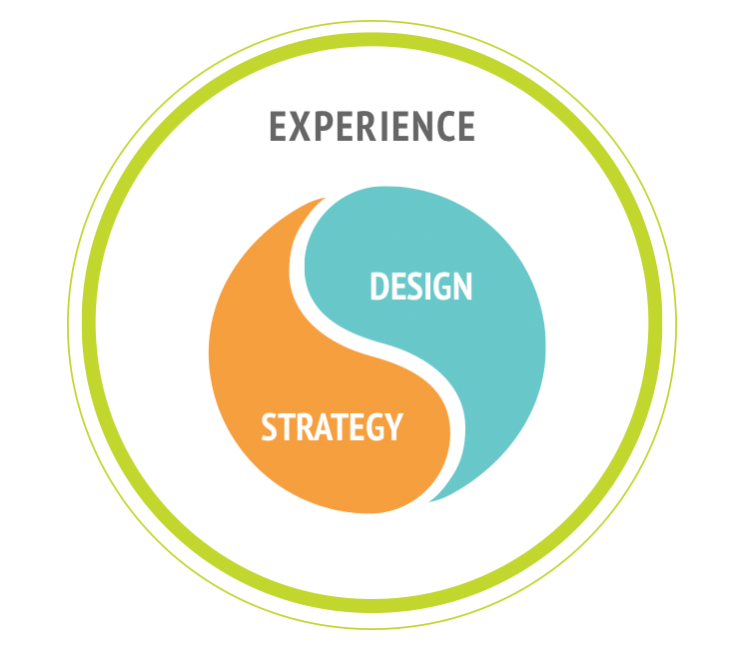written by Alder Yarrow.
It’s all too easy to find an effective process and then stick with it no matter how the world changes around you. This is where the discipline of Brand Strategy finds itself today–armed with the equivalent of hammers and chisels when their customers need steel and glass, not dry masonry.
Years ago (as usual, ahead of his time) one of my former colleagues, Clement Mok said “the experience IS the brand.” In this multi-channel, multi-touchpoint, social and global marketplace, that has never been more true. Your brand is not what you say it is, but instead constitutes the sum total of all the experiences that a customer has with you, along with all the feelings those interactions generate.
If this is true, then two things clearly follow.
The first is that what we all know as traditional Brand Strategy no longer suffices to guide the modern brand experience. When customers go to a branding firm to get a new or improved brand architecture, what they end up with isn’t really useful.
How can I say this? Because the output of this process is often the first thing that a new client hands me when we begin work on designing some part of their brand experience, and 99% of the time, it is supremely unhelpful.
We usually get a nice pyramid diagram, some adjectives, and some slides with stock photos on them describing the demographics of their customers. But these things don’t tell designers what kind of experience needs to be designed in order to help a company actually deliver on the high-minded promises found on those slides.
It’s like handing someone a hammer, some nails, some rocks and a tree and telling them to build a house. If they’re really, really good, they actually can figure out how to turn that tree into the boards they need and those rocks into the cement they need to build the house, but these days, that’s much easier said than done.
For example, merely knowing your brand personality attributes cannot help you figure out how to design the checkout process of your e-commerce store, let alone the way that one of your employees should talk to an angry customer, or what features should be part of your Minimum Viable Product.
The second thing that follows from the notion that the experience is the brand may seem blindingly obvious, but it’s worth saying anyway. Strategy is not design. Strategy is thinking. Design is doing. Experiences don’t get created by theory, they get created through practice. To create, build and evolve a brand in a world where experience defines the brand, you need to actually know how to design experiences.
That point bears repeating with some emphasis: if your brand is made up of experiences, then in order to bring your brand to life you need to actually create those experiences themselves, not sit in an ivory tower and create slides that articulate your promises and reasons to believe.
Of course, we can’t throw strategy out the window and just focus on execution. Execution without a strategy is a recipe for disaster. We just need a different kind of strategy that enables and guides the design process. We call this Brand Experience Strategy.
Brand Experience Strategy is the process of building a vision for a brand and then creating a set of practical and powerful tools that allow the business to bring that vision to life through experiences.

Lest you think I’m completely dismissing Brand Strategy as a discipline, clearly many parts of defining a brand architecture have value to any organization. But Brand Experience Strategy doesn’t just stop at brand values and emotional benefits. It translates the brand’s promises into experiential tenets. If your brand is “daring” then what does a daring experience consist of in the context of your customer experience? What would a daring customer service interaction look like? Sound like? Feel like? How would a daring company respond to a customer on Twitter?
You get the idea. Your employees need more than adjectives, they need to know how to act and how to speak. Perhaps most importantly they need to know how to make the everyday choices in your business that will produce for your customers both the kind of experience you aspire to, and at the level of quality you need to stand out among your competition.
Join Alder and Clement Mok for a VIP dining experience with conversation about how design principles and methods are expressed in today’s culture of high-end dining, winemaking, and restaurant design. Request an invitation today.
Alder Yarrow is the Chief Experience Officer of Cibo, a Brand and Customer Experience agency in San Francisco, responsible for the company’s UX and Strategy practices. When he’s not leading teams at the agency, he’s one of the world’s leading wine bloggers at Vinography.Com.

